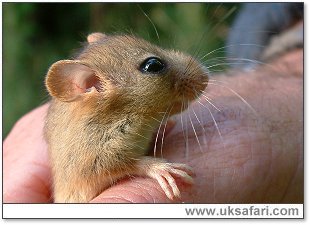
|

|
|
 Sent
to you Sent
to you
by e-mail
|
|
Simply
enter your details and hit the send button
more
info |
|


Click Here

Links
Advertise
Terms of Use
Contributors
About Us
Contact Us
|
 |
Go back
 | Bookmark
| Bookmark
 | Print Page
| Print Page  | E-Mail Us
| E-Mail Us 
Dormice
Pop Up at Chilworth Gunpowder Works
____________________________________________________
Posted: 12th October
2006
 |
Surrey Wildlife Trust says that a survey in late September of the area around Chilworth where gunpowder works were once located has found dormice and the Trust is about to put up special nest boxes to care for them.
Chris Matcham, a wildlife specialist at Surrey Wildlife Trust, says this is a very special site.
"Set in the valley of the River Tillingbourne, Chilworth not only houses the archaeological remains of the various gunpowder works down the ages but, due to its undisturbed state, it now supports several important rare species. There are brook lamprey and bullhead in the stream and canal and we now have confirmation that the common dormouse, also known as the hazel dormouse, is now in the
woodland," he says.
In the past the whole of the Tillingbourne valley was economically important for its mills and particularly at Chilworth for the gunpowder works that at one time were the largest in the country. Gunpowder manufacture ceased in 1920, the site was sold and has gradually reverted back to nature. Scrub and trees now cover the site, making it a haven for wildlife. The scrub includes hazel bushes, brambles, holly and hawthorn and this autumnís crop of hazel nuts provided an ideal time to identify the wildlife species that are eating them.
Chris added; "Used nutshells are very useful since the way that the nut is opened can tell us very accurately whether it was eaten by a squirrel, bird, woodmouse, bank vole or
dormouse."
You can discover more about 'nibbled nuts' and other tell-tale signs left by
wildlife with the special guide called Mammal
Tracks and Signs.

UK Safari News
|
 |

|